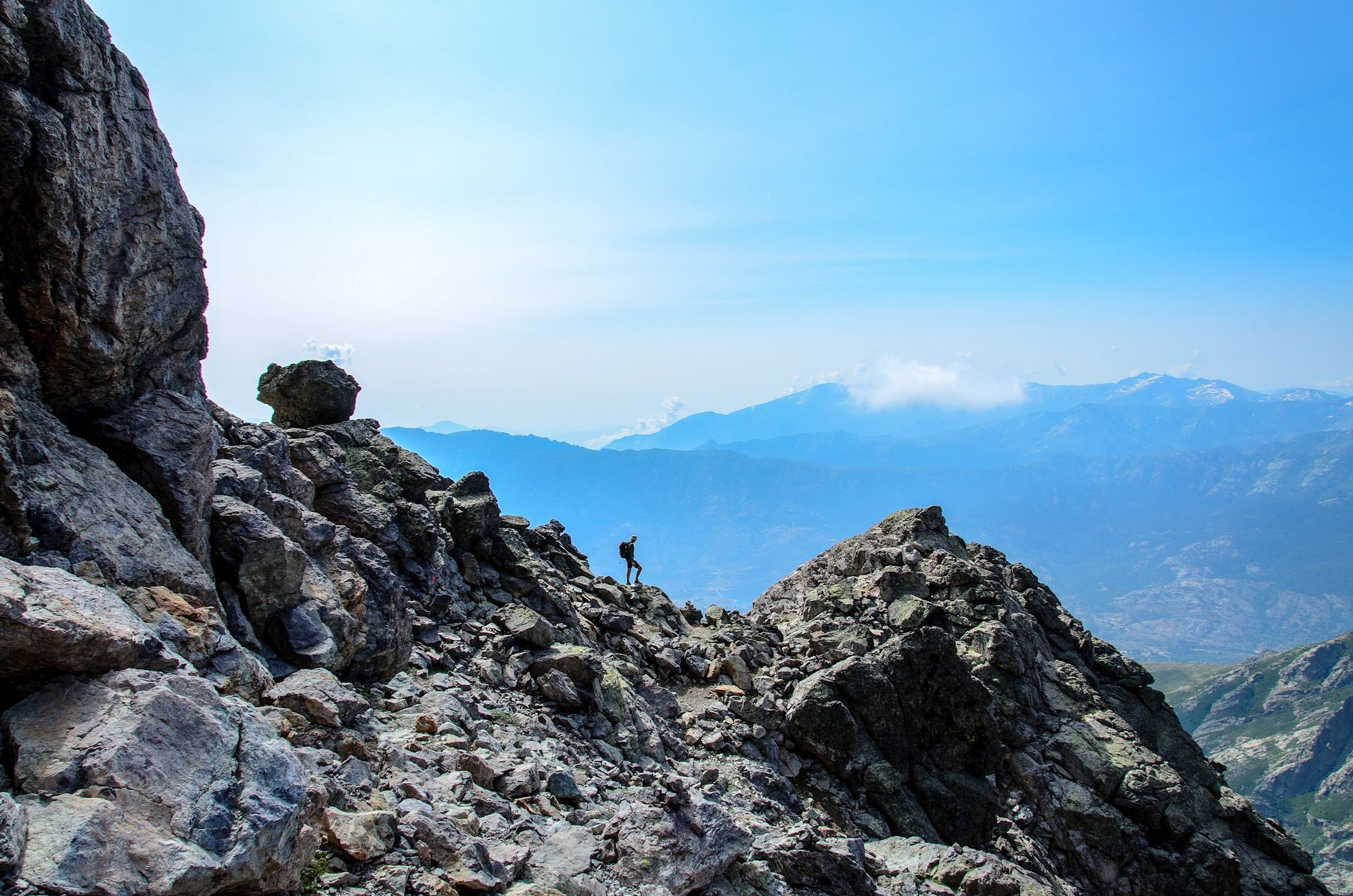The GR20 isn’t just any trail – it’s one of Europe’s toughest, stretching the length of Corsica through rugged granite peaks, precipitous stone slabs and sharp gullies. It’s a trail suitable only for experienced hikers, who need to be suitably prepared.
The GR20 demands respect, and as such, timing your hike right can be the difference between rewarding type two fun and actively putting yourself in jeopardy. This guide breaks down the conditions month by month, and gives you tips on how to manage the changeable weather.
Read more: Europe's Toughest Trek: GR20 16-Stage Hiking Guide
What’s the Best Time of Year to Hike the GR20?
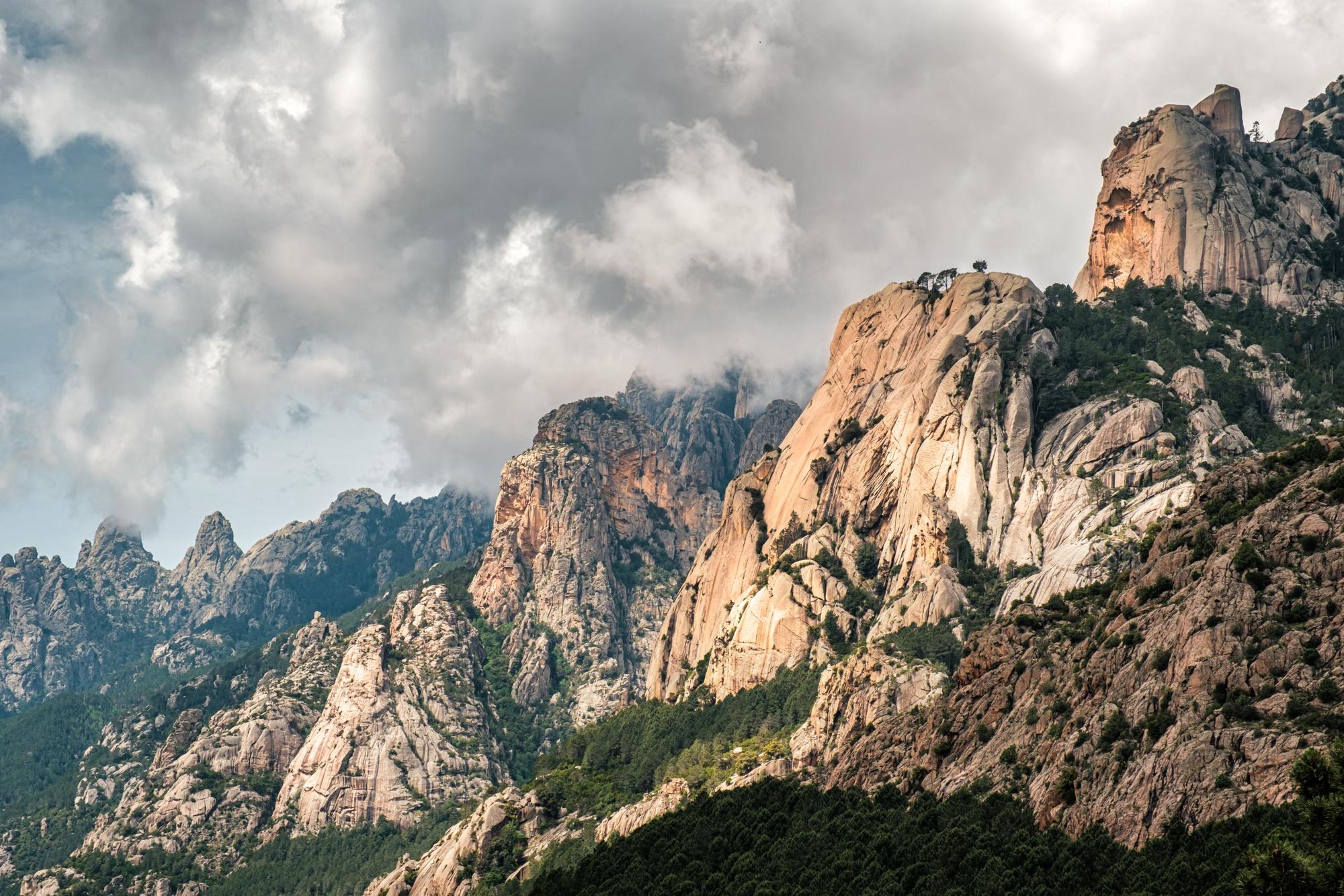
The best time to hike the GR20 is between late June and early September. During this period the mountain refuges are open, the trails are mostly snow-free and the weather tends to be stable.
July and August are the most popular months, with long daylight hours and warm daytime temperatures (although you can also expect afternoon thunderstorms). However, this is also peak season, so expect busy trails and fully booked refuges. If you prefer quieter paths and hiking in cooler weather, consider tackling the GR20 in June or September.

GR20 by Season: What to Expect
Spring (March – May)
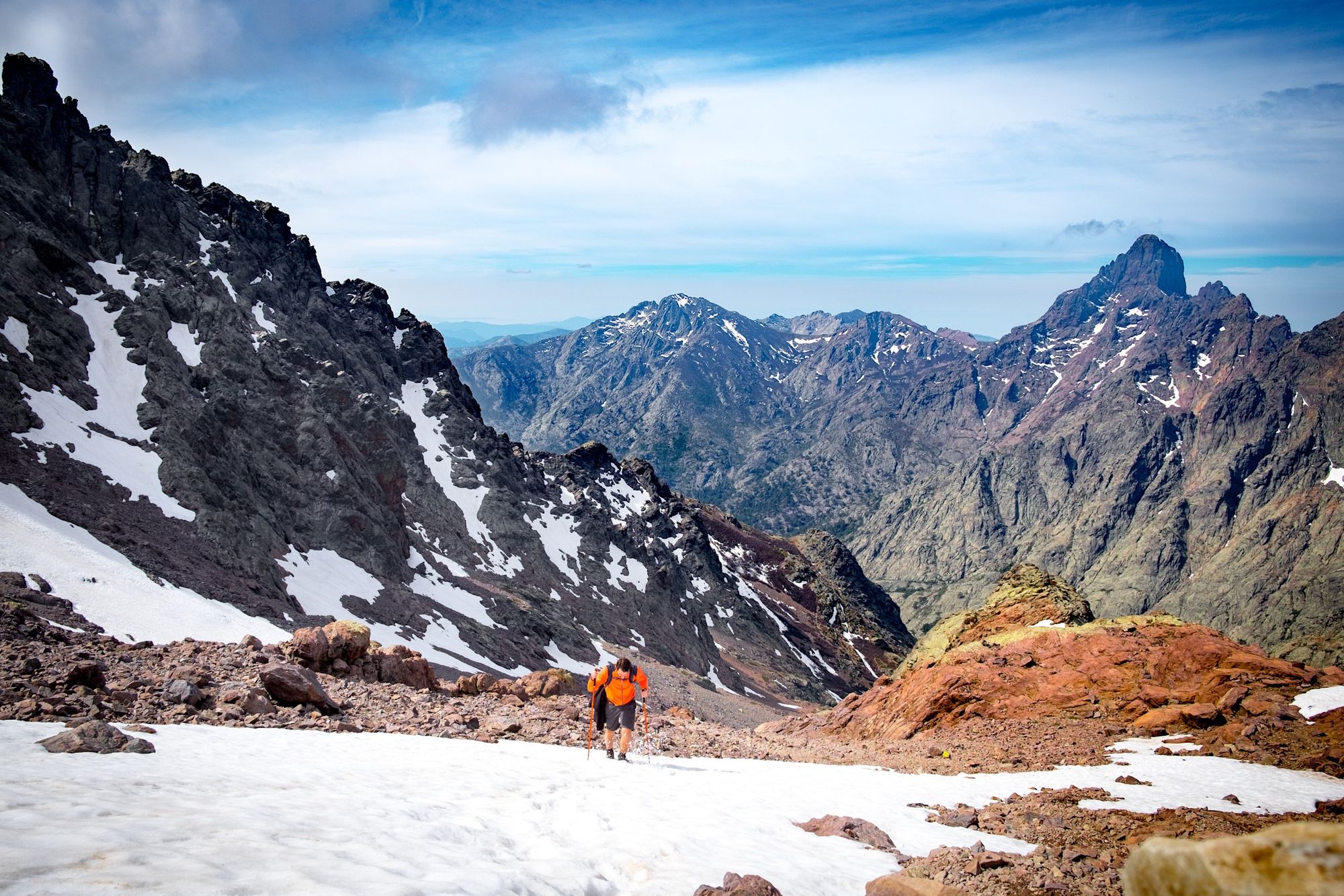
- Best for: expert hikers with alpine experience
- Average daytime temperatures: 10℃ –16℃
- Average night temperatures: 1℃ –8℃
Snow still remains on high ground during this season. Navigation is more difficult, there’s danger of avalanches and many refuges are still closed. You should only attempt the GR20 at this time of year with alpine experience and winter gear – we would strongly recommend waiting. If it’s a warm year, and the trails are clear, some refuges begin to open from late May.
Summer (June – August)
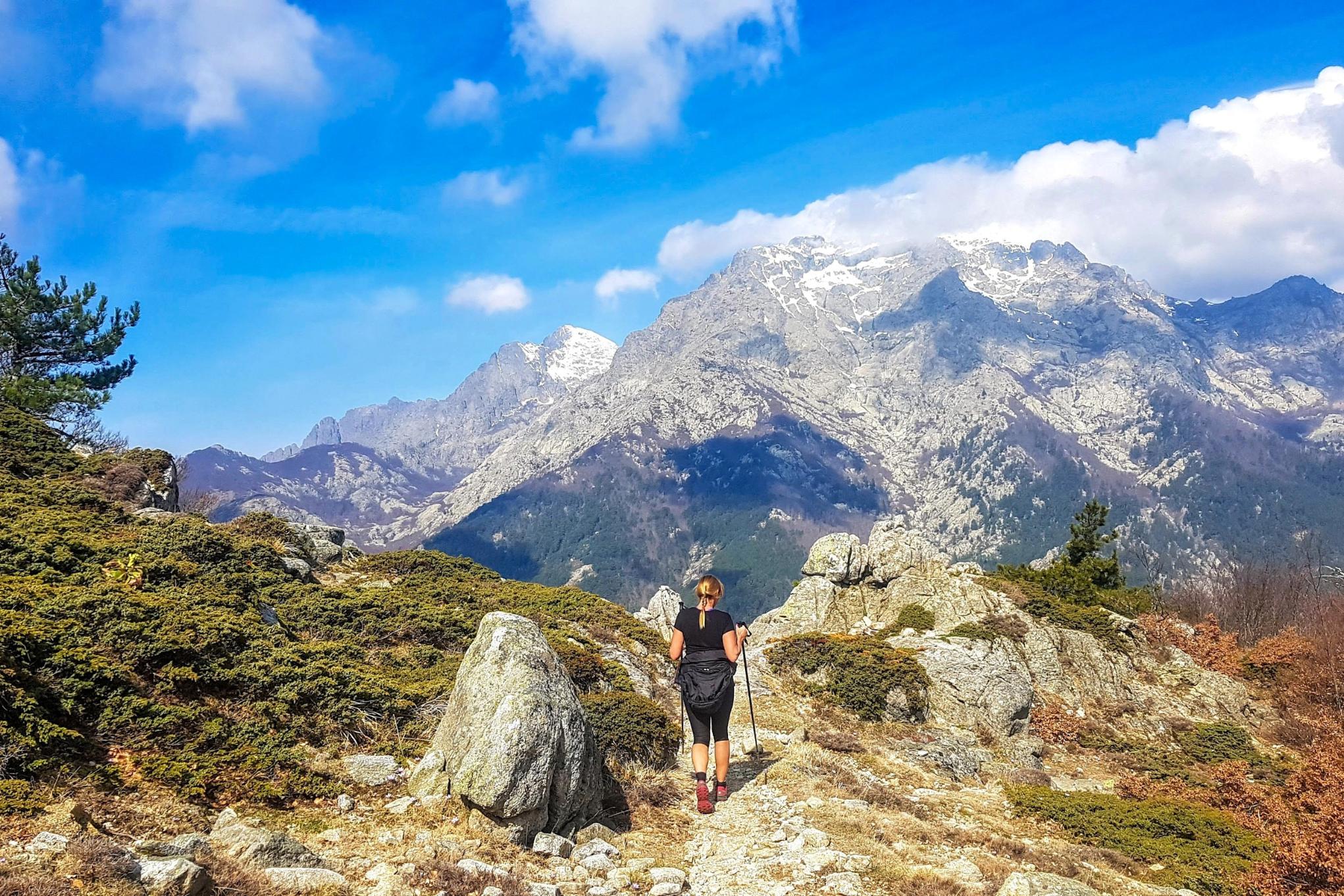
- Average daytime temperatures: 20℃–25℃
- Average night temperatures: 11℃–14℃
- Best for: hikers looking for the best conditions
In June, the weather is warm but not too hot, with the trails clear of snow in all but the highest reaches. Refuges have just started to open and the trails are clear of snow. This is one of our favourite months to trek the GR20.
July and August are peak trekking seasons on the GR20. You’ll find all the refuges open, alongside seasonal restaurants and other facilities. This also means the trail is at its busiest, so make sure you book refuges well in advance. This is the hottest time of year, with a risk of afternoon thunderstorms. Start hiking early in the morning to avoid them, and the midday heat; and make sure you carry enough water.
Autumn (September – October)
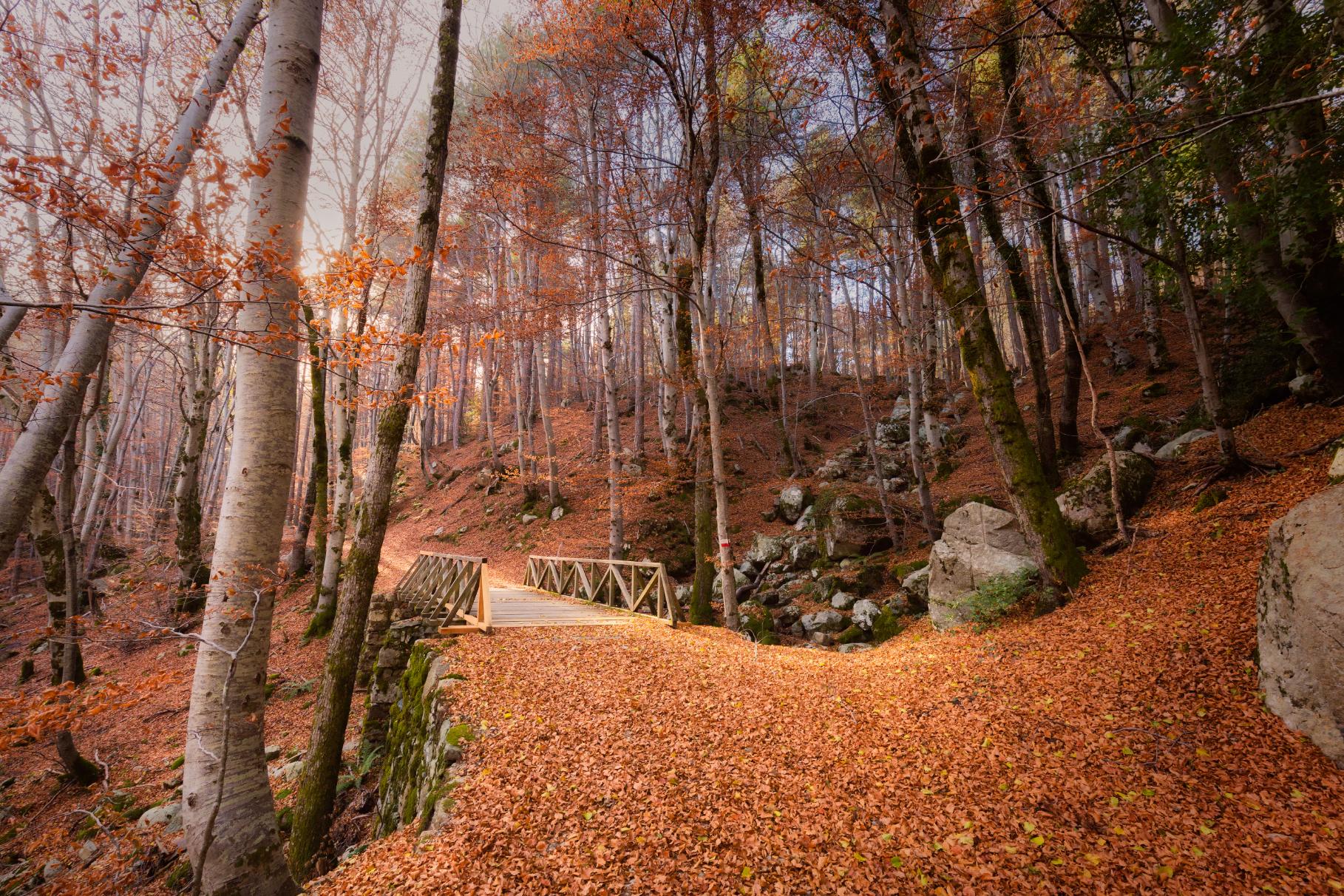
- Average daytime temperatures: 15℃–20℃
- Average night temperatures: 8℃–11℃
- Best for: autumn foliage and quieter trails
September is another good month for hiking, as you’ll have fewer people on the trails and pleasant weather. It will begin to cool as you head into October, with an increasing chance of storms and early morning frost. Refuges begin to close their doors in October, so services are more limited.
Winter (November – February)

- Average daytime temperatures: 5℃–10℃
- Average night temperatures: 0℃–-2℃
- Best for: expert mountaineers only
When winter arrives, it brings with it snow, ice and sub-zero temperatures. Trail conditions are dangerous, with high avalanche risk and poor visibility. Refuges are closed during this period. We actively advise against hiking the GR20 in this period, even if you have alpine experience.
Weather Conditions on the GR20
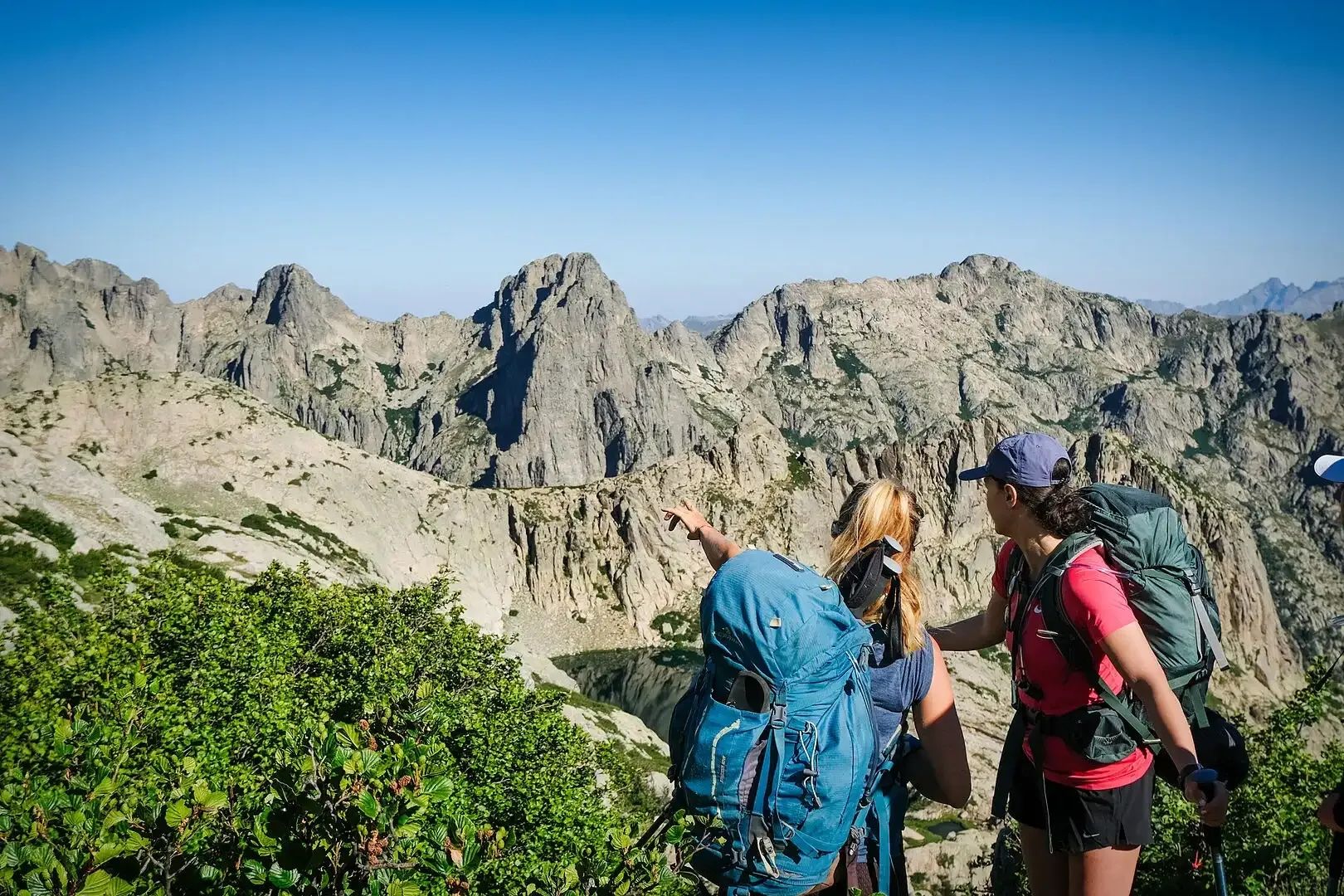
The GR20 crosses high alpine terrain, so the weather can shift rapidly. Even on the warmest summer days, be prepared for sudden rainstorms. The sun heats the granite slopes, creating updrafts that draw cool, moist air from the Mediterranean, leading to these downpours.
The temperature drops during the nighttime, once the sun goes down, so make sure you pack warm clothes even during the summer months.
During the colder months, you’ll experience rain, fog and snow. Visibility on the highest peaks is often poor. We would caution against attempting the route outside of the June to September trekking season, as poor weather can tip this tough trek into a dangerous one.

Tips for Planning Your GR20 Trek
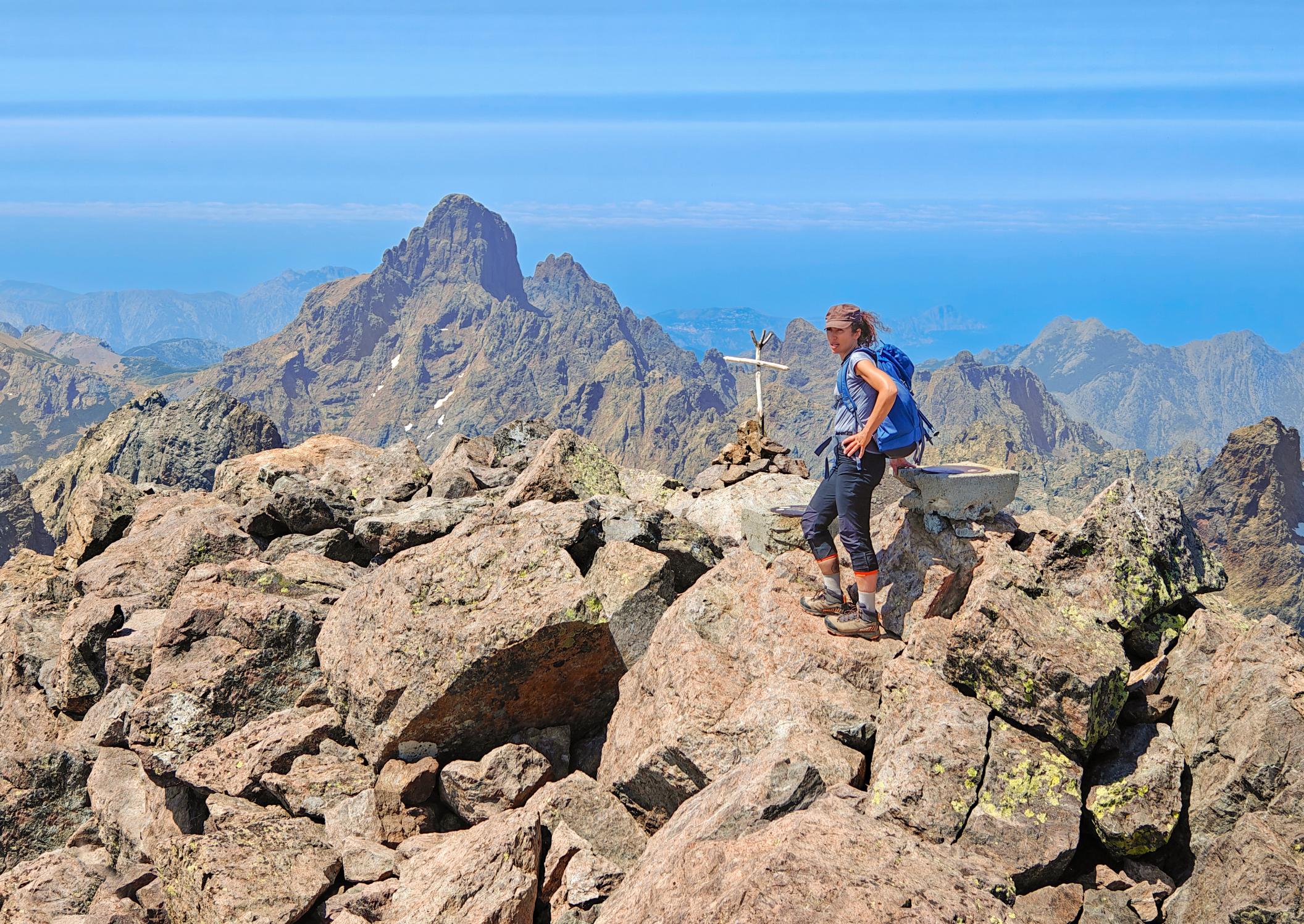
1. Book Refuges in Advance
If travelling during the summer months, make sure you book your accommodation well in advance. Reserve your space in the refuge on the Corsica National Park (PNRC) booking platform.
2. Check the weather daily
Weather changes fast in the mountains, so it’s important to check the weather regularly. We recommend using the Météo-France weather app.
3. Get travel insurance
No trekker should head to the GR20 without adequate travel insurance. We recommend getting coverage that includes mountain rescue – while this service is generally free in Corsica, the medical attention you receive afterwards could be expensive.
4. Carry Supplies
It’s important to pack light for a tough trek like the GR20, but equally you need to be prepared. While you can pick up food along the way, make sure you carry adequate water for the day. Carry sun protection with you, alongside a lightweight waterproof jacket. A map and guidebook are vital for independent trekkers.
Read the ‘kitlist’ section of our Trek the GR20 in Corsica trip for a full packing list.
FAQs

Can you hike the GR20 in May?
Hiking the GR20 in May is not recommended unless you're equipped for winter mountaineering. Snow and closed refuges make conditions challenging.
Is the GR20 open in October?
Parts of the trail may be accessible, but weather is unpredictable and many refuges will be closed or unstaffed. We recommend selecting hikes at lower elevations to enjoy.
What’s the weather like on the GR20 in July?
The weather in Corsica’s mountains is generally warm and stable in July, but afternoon thunderstorms can occur. Start hikes early and carry sun protection and waterproofs.
Inspired? Check out our Trek the GR20 in Corsica Adventure.


